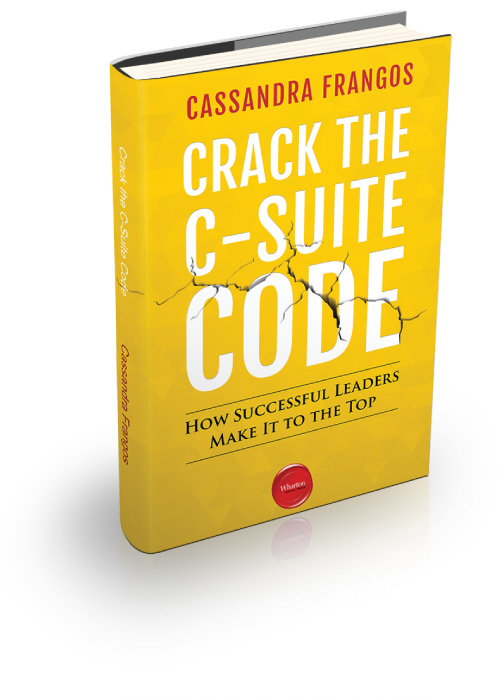
One of the most common questions we hear in the course of our work is this: How can I get to the C-suite? Aspiring senior leaders want to know the combination of leadership and technical capabilities, experience and aptitudes they need to have to get to the upper echelon of company leadership. They want to know whether a particular opportunity will help or hinder their progress. They wonder whether they have to leave their current company to make it to the top, or if staying put is the best strategy.
The answer to most of these questions is, of course: It depends. There are different paths to the C-suite, and the right path for any one person depends on factors ranging from their mix of experience, their appetite for risk and the networks and followership they’ve developed.
Through extensive research — including dozens of interviews with C-level executives and a survey of 350 high-potential leaders across industries — I have identified four primary paths to the C-suite as well as the characteristics of the executives who have successfully followed those paths.
Leaders who aspire to the C-suite should consider which route provides the best chance at reaching the top. Do this by evaluating how the different paths align with your experience, leadership brand and mindset; assessing the risks and rewards of each path; and considering how certain career choices can enhance or detract from your chances to succeed.
 The Tenured Executive. The most predictable and most common path to the top team is the internal promotion of long-tenured executives. Looking at the data from the U.S., for example, the majority of CEOs and other C-suite leaders were promoted from within, including 69 percent of newly appointed S&P 500 CEOs1, 69 percent of Fortune 500 CFOs2, 51 percent of Fortune 500 general counsel3, 54 percent of Fortune 500 chief information officers4, and 61 percent of CMOs from the 100 most-advertised U.S. brands. Tenured Executives are at their organizations for more than 15 years, steadily gaining experience and institutional knowledge, and ascending to higher and more-demanding roles. To successfully pursue this route, you must be able to reinvent yourself as the needs of the business change and be patient and open to new opportunities.
The Tenured Executive. The most predictable and most common path to the top team is the internal promotion of long-tenured executives. Looking at the data from the U.S., for example, the majority of CEOs and other C-suite leaders were promoted from within, including 69 percent of newly appointed S&P 500 CEOs1, 69 percent of Fortune 500 CFOs2, 51 percent of Fortune 500 general counsel3, 54 percent of Fortune 500 chief information officers4, and 61 percent of CMOs from the 100 most-advertised U.S. brands. Tenured Executives are at their organizations for more than 15 years, steadily gaining experience and institutional knowledge, and ascending to higher and more-demanding roles. To successfully pursue this route, you must be able to reinvent yourself as the needs of the business change and be patient and open to new opportunities.
 The Free Agent. The second path, external recruitment, includes outside appointees who move into the C-suite immediately, as well as individuals hired as “number twos” who later ascend into a top spot. Organizations often turn to executives outside the organization to lead change or due to pressure from activist investors. This path opens up when a strategic shift is needed or when existing executives don’t have the skills or experience to support the organization at a particular point in time. Being a Free Agent requires self-reflection to decide when the time is right to make a move. Since you need to be worth the risk of a company selecting an outsider, build high-demand skills and a track record of success — be strategic about building your expertise, experience and “brand.”
The Free Agent. The second path, external recruitment, includes outside appointees who move into the C-suite immediately, as well as individuals hired as “number twos” who later ascend into a top spot. Organizations often turn to executives outside the organization to lead change or due to pressure from activist investors. This path opens up when a strategic shift is needed or when existing executives don’t have the skills or experience to support the organization at a particular point in time. Being a Free Agent requires self-reflection to decide when the time is right to make a move. Since you need to be worth the risk of a company selecting an outsider, build high-demand skills and a track record of success — be strategic about building your expertise, experience and “brand.”
 The Leapfrog Leader. The Leapfrog Leader is promoted to a top role from two or more levels down in the organization, effectively leaping over more expected successors. In these cases, leaders are making a bet on potential, and generally rewarding leaders who have demonstrated the ability to understand and take advantage of emerging business models and those who are wired for change and reinvention. This is the most difficult path to execute because it’s hard to plan for, but you can be prepared for leapfrog opportunities by strategically managing your experience, reputation and network and being alert to changing business needs.
The Leapfrog Leader. The Leapfrog Leader is promoted to a top role from two or more levels down in the organization, effectively leaping over more expected successors. In these cases, leaders are making a bet on potential, and generally rewarding leaders who have demonstrated the ability to understand and take advantage of emerging business models and those who are wired for change and reinvention. This is the most difficult path to execute because it’s hard to plan for, but you can be prepared for leapfrog opportunities by strategically managing your experience, reputation and network and being alert to changing business needs.
 The Founder. Founders actively create their own opportunities, and therefore have more control over the timing of their advancement into the C-suite. This track often requires financial sacrifice, as it can mean leaving a high-paying job to go out on one’s own, while it often takes longer than anticipated for a business to become financially viable. To be successful on the Founder path, you will need to develop sales and communications skills, cultivate resilience and a tolerance for ambiguity and build a strong personal network because, starting out, you won’t be supported by the institutional infrastructure of past roles.
The Founder. Founders actively create their own opportunities, and therefore have more control over the timing of their advancement into the C-suite. This track often requires financial sacrifice, as it can mean leaving a high-paying job to go out on one’s own, while it often takes longer than anticipated for a business to become financially viable. To be successful on the Founder path, you will need to develop sales and communications skills, cultivate resilience and a tolerance for ambiguity and build a strong personal network because, starting out, you won’t be supported by the institutional infrastructure of past roles.
If none of these routes are right for you, all is not lost. There are several nontraditional and hybrid paths to the C-suite, from consulting to opportunities that arise with a merger or acquisition.
The demands on C-suite leaders continue to grow. CEOs and their teams face unprecedented market complexity, risk and the rapid pace of change. To lead organizations that thrive in this environment, aspiring C-suite executives must navigate a course that allows them to build a robust set of leadership capabilities and experience and leverages their unique strengths, mindset and leadership style.
This article is adapted from the book Crack the C-Suite Code: How Successful Leaders Make It to the Top, written by Cassandra Frangos (Boston) and published in March 2018 by Wharton Digital Press. In addition to interviews, the book draws on Cassandra’s experience as head of Cisco’s Global Executive Talent practice, where she played an integral role in the planning for the 2015 CEO succession.
1 2017 CEO Transitions. Spencer Stuart. February 2018.
2 Profile of the Fortune 500 CFO — today and in the future. Spencer Stuart. June 2017.
3 Do You Have a Successor? Many general counsel believe they have an internal successor, but do CEOs and boards agree? Spencer Stuart. March 2018.
4 The State of the CIO in 2018. A Three-Year Study of a Rapidly Changing Role. Spencer Stuart. February 2018.
5 Chief Marketing Officer Average Tenure Increases to 44 Months. Spencer Stuart. March 2018.